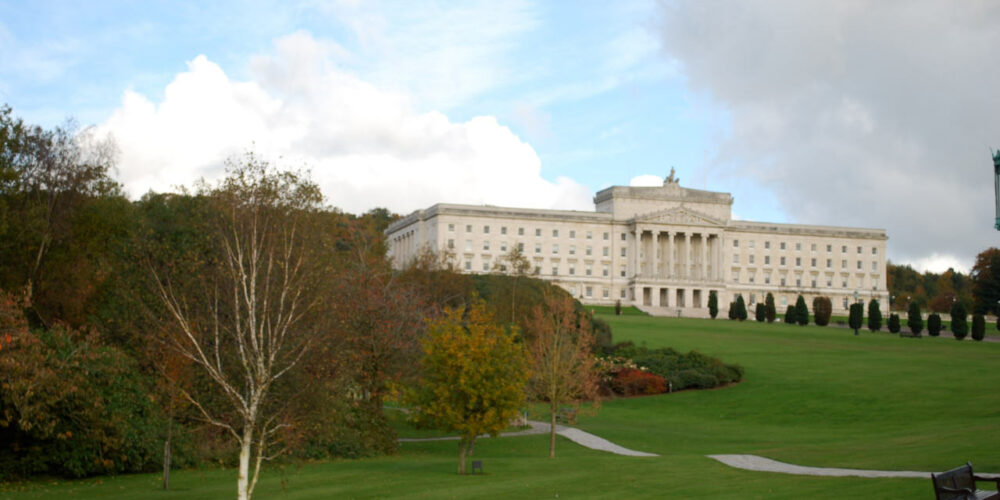■ This is the text of a paper given by the general secretary of the CPI that formed part of an exchange of views in June 2021, a conversation between left republican activists and Protestant religious leaders to discuss the future of the North of Ireland.
First of all I would like to thank the organisers for the opportunity to engage in this important conversation on the centenary of the establishment of the Stormont parliament on 22 June 1921, which marked the partitioning of Ireland.
As James Connolly predicted, the partitioning of Ireland unleashed a “carnival of reaction” upon the people of Ireland. A century later, no-one could argue against that.
Our conversation is taking place against the backdrop of nearly three decades of armed resistance by republicans and two decades of a political process, with many stops and starts, stumbling from one crisis to another.
The partitioning of Ireland was for solving the crisis that British imperialism faced in Ireland and was imposed to secure its interests. Partition was not for solving any of our people’s problems, nor did it do so. In particular, for the working class it simply institutionalised division and secured the interests of a minority wealthy elite, north and south.
A century later, the world that this statelet was born into has changed utterly in a place that no-one can even agree what it should be called.
A century ago this part of Ireland was the most industrialised, with shipbuilding, engineering works and textile mills dominating the landscape, and was plugged in to the needs and interests of the British empire. The southern part of the country was economically underdeveloped, thanks to the policies and trading structures imposed by Britain, which were to supply cheap food, cattle and cheap labour to the metropolitan British market.
Today this Ireland—north and south—is unrecognisable. In particular, this place called “the Six Counties,” “the North of Ireland,” “Northern Ireland,” “Ulster” or “the Province” is no longer the economic power house it once was. The industrial base of unionism is gone.
Unionism has little to offer in economic terms or its political base except sterile neoliberalism, low wages, declining health services, creaking public services. None of the five parties in the Executive have any alternative economic strategy, while the British government remains in overall control.
People in this part of the country are marginalised from the power centres that can and do make the decisions that affect their lives.
The capacity of unionism to dispense privileges to one section of the community has severely diminished. Unionism no longer has a monopoly on governance, and no longer has a monopoly on the repressive apparatus of the state. Its influence within the British establishment has shrunk. Its control and its capacity to gerrymander local government has been greatly curtailed.
The mass mobilisation of tens of thousands of working people under the banner of the Northern Ireland Civil Rights Association broke the back of unionism with its democratic demands.
The British empire has long since faded but still retains a significant place in global finance capital. Unionism’s capacity to secure its political base with exclusive access to and the distribution of jobs and services, at the expense of the nationalist community, is nowhere near the scale it was a hundred years ago. It is no longer the monolithic block it once was, as the material conditions have changed, and people’s own lived experiences have also changed. And the needs of imperialism have also changed. Its relationships change and shift depending on its strategic needs at a given time.
How we evaluate the last hundred years of the existence of Stormont depends upon our political position and understanding and to a large degree our lived experience. If you approach it from a unionist viewpoint then it has delivered what it set out to do, and that was to ensure that this part of the country remained under direct British control, with a small level of autonomy. Its establishment secured the unionist economic relationship to Britain.
Britain never really paid any attention to the internal workings of the Six Counties, as long as the region was stable and under its control, as exercised through unionism, and its strategic interests were secured. But in order to do this unionism first of all had to secure its hegemony by means of a number of linked methods: buying political loyalty, economic discrimination, repression, violence, and subservience.
If you were of a nationalist persuasion, then unionism had to define you as the enemy within. Unionism needed to construct a siege approach: nationalists were characterised as being loyal to a “foreign country” and disloyal to the empire, thereby a threat to the very existence of the state.
This allowed unionism to wield a whole series of measures against the enemy within, including the mass burning of homes at the foundation of the statelet, which continued at regular intervals throughout the history of its existence, so ensuring ghettoisation and no cross-contamination, giving unionism greater effective control.
This ensured that its central ideological position of “them and us” was maintained. It allowed no room for disloyalty from within the unionist community—this also included trade unionists and left-wing activists from that community—in order to keep dissent and opposition within tight limits.
Nationalists and republicans were subject to draconian repressive laws—envied by the apartheid state of South Africa. All forms of discriminatory practices could be used against people, in housing, jobs, regional and local economic development and investment, as well as in education. Even the opportunity to vote and have your voting preference reflected in how or who could run local government was gerrymandered. Great harm was inflicted on the nationalist and republican community. This resulted in the creation of a huge pent-up frustration by their lived experience, which exploded in 1968 and ’69.
But just as important was the damage done to working-class communities where unionism was the dominant influence and controlling force. The unionist boss class and Big House unionism, even before the establishment of Stormont, had fostered and nurtured a siege mentality and discriminatory approach. It created a dependence culture and enforced conformity, a culture of unquestioning loyalty. It built and enforced a vertical structure within unionist communities, an all-class alliance, to bolster the state and British control and loyalty to empire.
Sectarian organisations and institutions were developed and given special status. They became institutionalised, built in to the fabric of the state, thereby ensuring control within unionist communities through the employers, big landowners, the Orange Order, churches, the RUC and B Specials.
No space was allowed, or would be tolerated, for the development of alternative ideas. It was a hermetically sealed set of values that you had to accept and be loyal to, otherwise many avenues for you or your family would be closed off. Unionism institutionalised a dependence chain of control, resulting in this all-unionist class alliance.
Jobs were secured by being a member of one of the various sections of the Orange Order. Policing and the apparatus of repression came from one community, and an attack on or a rejection of this apparatus of repression was perceived as an attack on Protestantism, on unionism, and all that it stood for and defended.
This allowed for the development of an apparatus of repression, aimed at the nationalist community but also serving as a warning to others, most importantly to those within unionist communities, that “this can happen to you if you break from the enforced loyalty,” a loyalty bought by the dispensing of marginal privileges and by the threat of ostracising and repression.
So you could live in a slum on the Shankill Road or Sandy Row, be paid poor wages and suffer poor working conditions in the shipyard, in an engineering factory or mill but still feel yourself in a better place than the worker living in a slum on the Falls Road or the Ardoyne.
This created the material basis for institutionalised discrimination and repression. A strategy of creating a myth about the “other side” meant that many unionists viewed nationalists as a threat to themselves, to their self-interest, and to the very existence of Stormont itself, which was the perceived guarantor of those interests.
Unionism needs to be defeated and overcome, because
- it is a divisive ideology,
- it has used and does use religion as a weapon of division,
- it can only exist if division is a necessary factor in all aspects of political, economic, social and cultural life, and
- it promotes and fosters an innate sense of entitlement by the unionist community
—just as the Catholic Church and the counter-revolutionary Redmondite nationalists usurped the values of the struggle for national independence for their own selfish class reasons and ensured that their class and material interests were secured, that their views and values became institutionalised after the founding of the Free State. The Catholic Church paid little or no attention to the plight of those members of its flock trapped within the Six Counties.
Unionism also used its economic interests and religion as political weapons with which to consolidate its economic power, securing its self-interest and control, to ensure the reproduction of its economic material base and its economic dependence on its subservient relationship to the empire.
What Brexit has exposed is that, under the conditions of capitalism and the capital accumulation process, partition is now an anachronism. If Ireland and Britain were no longer to trade freely with each other, the Six Counties would have to remain in one Irish market.
Brexit has also thrown up many contradictions and exposed new fault lines within the Six Counties. The central one for unionism is that the government of the imperial state to which they proclaim a strident loyalty now regards its connections with this statelet as a tradable asset and the border that partition carefully crafted a century ago as being as “impermanent as the morning dew.”
For the British ruling class as a whole, securing a harmonious trading and political settlement with the European Union, in line with its greater global ambitions, means that the North of Ireland can be more easily seen as a problem to be disposed of rather than an “asset to be treasured”—a lesson that unionism has yet to learn or fully understand, wishing to ignore that British imperialism, like all imperialist formations, has no friends but only interests to pursue.
Partition has prevented the working class in Ireland from becoming a determining political force in Ireland. It has sown deep division within the working class and daily attempts to reinforce the belief in the self-entitlement of one section of the population over another.
What is clear to those who wish to see is that unionists have little influence on the British state. Unionism only reinforces the marginalisation of the people. They have no influence over those institutions that have a daily effect on the lives of the working people of the Six Counties. They cannot change what the EU does, nor the British government, and have little influence in Dublin, or even in the United States, which also interferes in the affairs of our people. Their lives and material conditions are determined by forces that they have no say in or control over.
By its very construction and nature, the Six Counties is hopelessly locked in to a cycle of instability.
The region has traversed a very rough terrain, from an Orange sectarian statelet, with political and economic discrimination embedded in the institutions of the state that benefited one community, to an armed insurrection that lasted nearly three decades, and to an almost but not quite fully fledged bizonal entity, divided along sectarian lines.
The way forward
Partition has prevented the working class from becoming a determining political force in Ireland. That is what it was imposed to achieve.
We are not arguing for or campaigning for some reheated united Ireland run along the same lines as either Dublin, London, or Brussels. Our vision and understanding of what a united Ireland should be and whose interests it should serve is not the same as those of Fianna Fáil or Fine Gael. Partition did not solve any of our people’s problems. In particular, for the working class it simply institutionalised division and secured the interests of a minority wealthy elite.
National-democratic state
A national-democratic state is central to the ending of division in our country. It is the means of binding the deep wounds created by partition. An all-Ireland national-democratic state is the best and, I would say, the only means to achieve that.
It is a vision of an entirely new democracy—a democracy that extends into every corner of our lived experience, democracy and equality at all levels: economic, political, social, cultural, and human relations.
Some of the building-blocks required for advancing to that are the national campaigns around which we can build the unity of our class, such as:
- an all-Ireland public health service,
- an all-Ireland housing strategy for the building and supplying of public housing,
- an all-Ireland education service, stripped of its imperial content,
- an all-Ireland strategy for universal free public services, and
- an all-Ireland Bill of Rights for workers.
The struggle for and the securing of such demands would go some way towards allaying the fears of sections of the working class at present influenced by unionism.
Our strategy is to bring into being an entirely new democracy—a democracy that extends into every corner of working people’s lived experience, with democracy and equality at all levels. To paraphrase Wolfe Tone, a national-democratic state must have at its heart, and central to all economic and political decisions, the interests of the people of no property.






